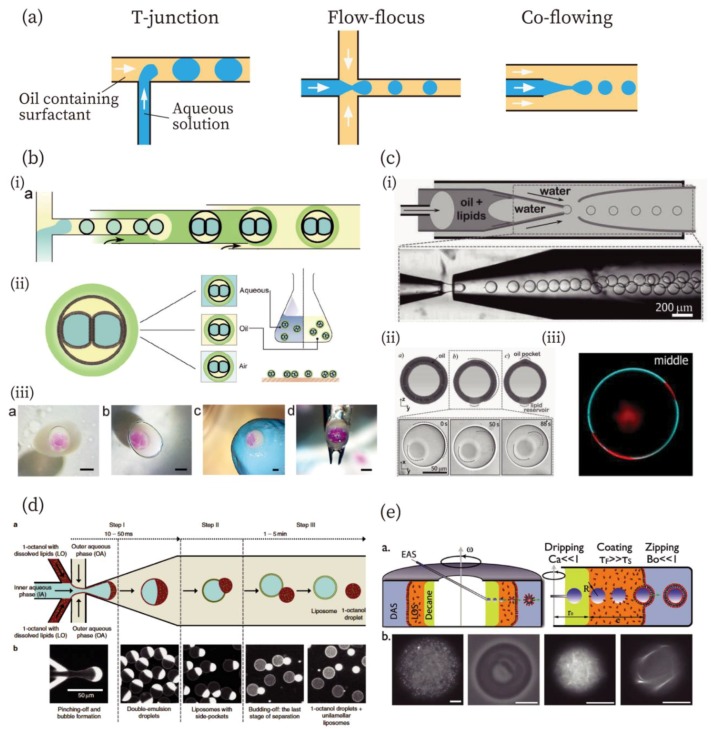Figure 1.
Methods for the production of compartments for artificial cells. (a) Typical design of flow channels for the fabrication of W/O emulsions: T-junction, flow-focusing, and co-flowing methods from left to right. (b) Droplet interface bilayers (DIBs) from the contact of two W/O emulsions in the large W/O emulsion covered with a gel-shell [43]. (i) Illustration of microfluidic fabrication of gel-encapsulated DIBs. (ii) Schematic illustrations of the gel-encapsulated DIBs in an aqueous, an oil, and an air phase. (iii) Gel-encapsulated DIBs in aqueous, oil, and air phase and manipulated using a tweezer. Scale bars: 1 mm. Reproduced with permission from [43]. (c) Fabrication of giant unilamellar vesicles (GUVs) with an ultrathin oil shell using the double emulsion method [49]. (i) An illustration and image for the fabrication of double emulsions with an ultrathin shell. (ii) Illustrations and microscopic images of GUVs with ultrathin shells. (iii) Phase separation of the GUV prepared by this method. Red and cyan colors indicate liquid-disordered and liquid-ordered phases, respectively. Reproduced with permission from [49]. (d) Fabrication of GUVs by the octanol-assisted method [50]. Reproduced with permission from [50]. (e) A continuous droplet interface crossing encapsulation (cDICE) method for GUV fabrication [52]. Scale bars: 10 µm. Reproduced with permission from [52].

